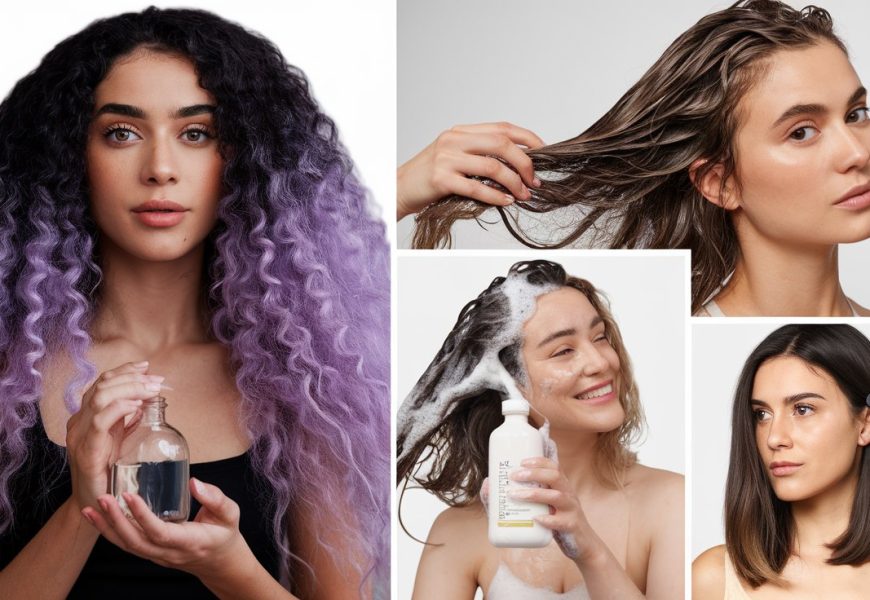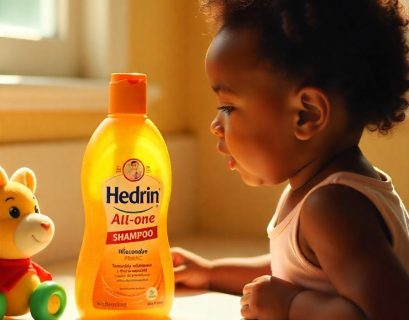Damaged hair can be challenging to restore, but with the right steps, anyone can regain smooth, soft, and healthy-looking locks. This article will provide actionable advice on heal damaged hair, leaving it with long-lasting softness and resilience. With consistency and care, these tips can significantly improve hair texture, moisture, and strength.
Understanding Hair Damage and Its Causes
Hair damage occurs when the outer cuticle layer, which protects hair strands, gets worn out due to environmental exposure, harsh products, or styling practices. Damaged hair often feels dry, looks frizzy, and can be prone to split ends. Here are some of the main causes of hair damage:
- Excessive Heat Styling – Frequent use of hairdryers, flat irons, and curling irons can strip moisture from hair, making it dry and brittle.
- Chemical Treatments – Coloring, bleaching, and perming treatments weaken hair structure, leaving it vulnerable to damage.
- Environmental Factors – Sun exposure, pollution, and even wind can dehydrate hair, causing it to become dull and lifeless.
- Rough Handling – Brushing wet hair aggressively or using harsh hair ties can lead to breakage.
To reverse these effects, a combination of gentle care practices and nutrient-rich treatments is essential.
1. Limit Heat Styling to Reduce Damage
One of the most effective ways to heal damaged hair is to reduce the use of heat styling tools. High temperatures weaken the hair structure, making it more susceptible to breakage and split ends. Here’s how to minimize the impact of heat styling:
- Use Heat Protectants – Before using any hot tools, apply a heat-protectant spray or serum to coat your hair strands and minimize damage.
- Lower the Temperature – When using styling tools, keep them at a lower temperature setting to reduce potential harm to your hair.
- Air Dry When Possible – Let your hair dry naturally whenever you can. Patting it gently with a soft towel can also help reduce frizz.
2. Choose a Moisturizing Shampoo
Selecting a shampoo specifically designed to hydrate and repair damaged hair can make a substantial difference. Look for ingredients like argan oil, keratin, or proteins that can strengthen and moisturize each strand. Using a Bond Repair Shampoo is an excellent choice, as it helps repair weakened hair bonds and restores softness without causing further damage. Limit shampooing to a few times a week to avoid stripping your hair of its natural oils.
3. Deep Condition Regularly for Enhanced Softness
Deep conditioning treatments are a must for healing damaged hair. They provide an intense boost of hydration and nutrients to revive dull, lifeless hair. Here’s how to incorporate deep conditioning into your routine effectively:
- Use a Hydrating Mask Weekly – Choose a mask that targets dryness and strengthens the hair shaft. Leave it on for 10-20 minutes to allow the ingredients to penetrate deeply.
- Look for Reconstructive Ingredients – Ingredients like keratin, amino acids, and biotin work well to rebuild damaged hair.
- Apply to Damp Hair – Applying the mask on damp hair, rather than soaking wet hair, allows it to absorb more product, enhancing its benefits.
4. Hydrate Your Hair with Natural Oils
Natural oils are an excellent way to replenish moisture in damaged hair. Some oils, like coconut oil and olive oil, can penetrate the hair shaft, while others, like jojoba oil, seal in moisture and protect the outer layer.
- Coconut Oil – Known for its deep-penetrating properties, coconut oil helps reduce protein loss and strengthens hair from within.
- Argan Oil – Often called “liquid gold,” argan oil is rich in vitamins E and A, which are essential for softening hair and adding shine.
- Jojoba Oil – This oil mimics the natural oils in your scalp, making it a great option to protect hair and reduce frizz.
Apply oils as a leave-in treatment overnight or add a few drops to your conditioner for extra hydration.
5. Trim Regularly to Prevent Split Ends
Split ends can travel up the hair shaft, worsening overall hair damage. Regular trims every 6-8 weeks can prevent this, keeping your hair healthier and softer. Even trimming off a small amount of damaged hair can make a noticeable difference in texture and appearance.
6. Avoid Over-Washing Your Hair
Washing your hair too frequently can strip it of its natural oils, leading to dryness and brittleness. Ideally, aim to wash your hair 2-3 times per week, depending on your hair type and activity level. Use cool or lukewarm water when rinsing to help lock in moisture.
Gentle Shampooing Tips
- Massage your scalp gently rather than scrubbing, which can help stimulate blood flow without causing tangling or breakage.
- Rinse thoroughly to avoid product buildup, which can weigh down hair and make it look dull.
7. Embrace Silk Pillowcases and Microfiber Towels
Switching to a silk pillowcase can help reduce friction, which means less breakage and frizz as you sleep. Microfiber towels are gentler on hair than traditional cotton towels, making them a great option for drying hair without creating extra damage.
- Microfiber Towels – These towels are highly absorbent and reduce the need for excessive rubbing, which can lead to tangling and frizz.
- Silk Pillowcases – They provide a smooth surface for your hair to rest on, reducing breakage and keeping hair soft.
8. Nourish Your Hair from Within
A balanced diet plays a huge role in heal damaged hair health. Eating foods rich in vitamins, minerals, and proteins helps strengthen hair from the inside out. Here are some essential nutrients for maintaining strong, soft hair:
- Biotin – Known as the “hair vitamin,” biotin is found in eggs, nuts, and whole grains. It helps promote hair growth and strength.
- Omega-3 Fatty Acids – Found in fish like salmon and in flaxseeds, omega-3s support scalp health and encourage shiny, soft hair.
- Vitamin E – This antioxidant-rich vitamin protects hair from environmental damage and can be found in avocados, nuts, and leafy greens.
9. Protect Hair from Sun and Pollution
Just like skin, hair can also get damaged by UV rays. Exposure to the sun can dry out hair, causing it to look faded and feel coarse. If you’re spending time outdoors, try these protective measures:
- Wear a Hat – This is one of the easiest ways to protect your hair from direct sunlight.
- Use Leave-In Conditioners with UV Protection – Look for products that provide a layer of protection against UV rays. These can also prevent color fading for dyed hair.
10. Be Gentle with Wet Hair
Hair is at its most vulnerable when it’s wet, so it’s crucial to handle it gently during washing and styling:
- Use a Wide-Tooth Comb – After applying conditioner, use a wide-tooth comb to detangle your hair. This reduces breakage and minimizes damage.
- Avoid Rough Towel-Drying – Instead, gently pat or squeeze your hair to remove excess water.
With these simple but effective steps, your hair can recover from damage and regain its natural softness and shine. The key to lasting results is consistency—each step strengthens your hair over time, making it more resistant to the future and heal damaged hair.












